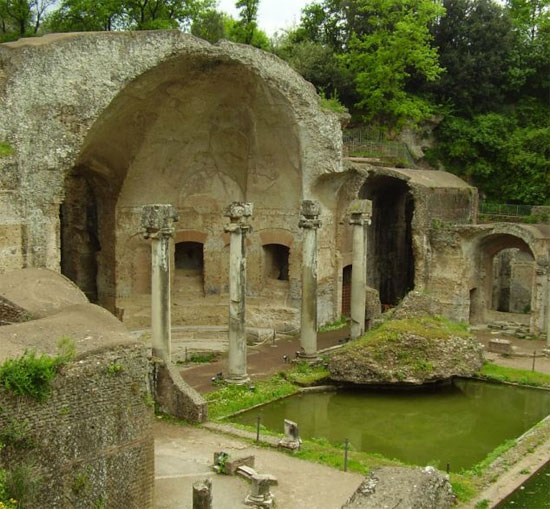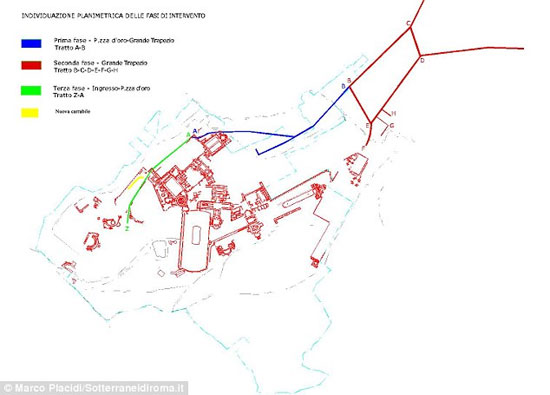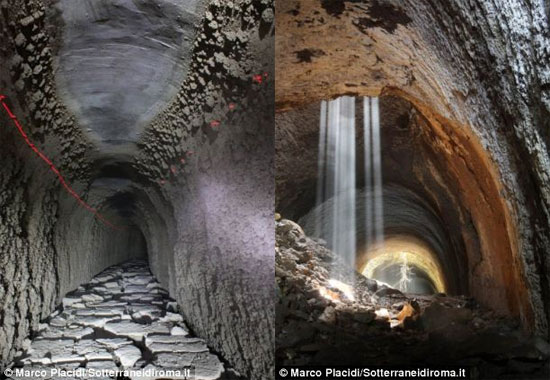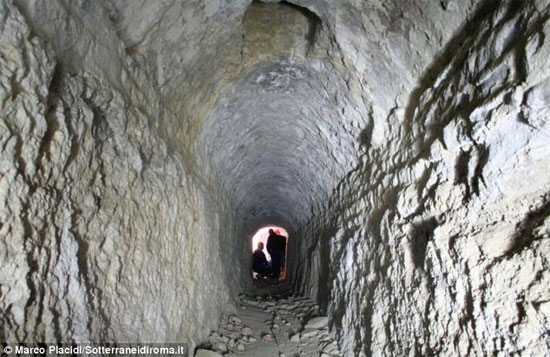Revealed 'underground city' under the Roman emperor's mansion
Archaeologists have discovered a network of tunnels, forming an underground city, buried deep beneath the mansion of Roman emperor Hadrian near Rome.

A corner of the relic of the Roman Emperor's residence Hadrian in the 2nd century AD
The team began mapping the underground network and believed these were the roads used for towing vehicles carrying slaves, food, and other goods under the royal 120-hectare territory. Roman emperor.

The team began mapping the tunnel network under the mansion
Emperor Hadrian built the mansion in Tivoli, near Rome in the 2nd century AD. The mansion includes 30 buildings used as palaces, barracks, mineral water baths, theaters and libraries. Each of them has elaborate gardens, swimming pools and surrounding fountains.

This tunnel system is used for towing vehicles carrying slaves, food and other goods
According to the map created by cave expert Marco Placidi and a group of Sotteranei di Roma Archaeological Association, the main tunnel is about 3 meters wide, stretching over 800 meters to the northeast before turning south and leading to a 700 meter loop. Experts said that this roundabout could act as a turning point for trailers.

The main tunnel is nearly 3 meters wide, extending over 800 meters to the northeast before turning south and leading to a 700 meter loop
The main tunnel is nicknamed Strafa Carrabile (meaning Great Underground Road in Italy). It was bigger than any other tunnel ever discovered below the mansion. Archaeologists have discovered its existence when it found a hole buried in the bushes along a path to the main gallery.
Because a part of the tunnel was broken down by rocks and rubble over time, the archaeological team had to mobilize the control robot, equipped with cameras to explore the areas they could not reach.
Some tunnels are rocky over time, making it difficult for researchers to access, and must use adventurous robots.
During the excavation process, archaeologists also discovered another tunnel larger, more than 4.8 meters wide and could be used as a double path. However, because there is so much rock and soil blocking the way, the team cannot penetrate and determine where this tunnel leads.
- One of the dreaded rules of the Roman emperor: Taxing urine
- Unexpectedly discovered a thousand-year-old underground city when repairing a house
- Confused about the sexual assault, the tyranny of Roman times
- The reason the Roman emperors were assassinated
- Rare gold coin engraved with Roman emperor
- Discovering the old city with a 2,000-year-old penile image?
- Discovered an ancient arrow 2,000 years ago of the Romans in Israel
- Gold coins 2,000 years of casting the Roman emperor was deified
- Reveal new findings in ancient Roman city - Pompeii
- Villas more than 1,500 years old may belong to the Roman emperor
- Find intact tombs of athletes in ancient Roman sports
- Huge pool in ancient Roman city
 Discovered an ancient centipede fossil 99 million years old
Discovered an ancient centipede fossil 99 million years old Discovered bat-like dinosaurs in China
Discovered bat-like dinosaurs in China Discovered a 200-year-old bronze cannon of the coast
Discovered a 200-year-old bronze cannon of the coast Discover 305 million-year-old spider fossils
Discover 305 million-year-old spider fossils